A beginner question. I'm trying to put up a famo.us app. So far, I had nice results on a simple experiment.
Now that my app is growing, I want to allow moving between "screens" : landing screen -> info screen -> back to landing screen -> etc.
My "screens" are View() with surfaces, modifiers, etc. added to the View()
I use RenderController() to switch between screens, with its hide() and show() functions.
The problem is that when going back to a previously used screen, surfaces no longer show up !
Code :
var app_render_controller = new RenderController();
app_render_controller.show(landing_screen); // ok
app_render_controller.hide(landing_screen); // ok
app_render_controller.show(info_screen); // ok
app_render_controller.hide(info_screen); // ok
app_render_controller.show(landing_screen); // NOK -> I only see my background surface !
When examining the DOM, I'm able to see the outline of my surfaces at the place they should be, but they are hidden. It seems the background surface is now in front of the content surfaces (a ScrollView). If I hide the background, I see the Scrollview again.
I read that the overlap of elements was corresponding to the order they were added to the rendering tree. So since the tree under my View()-based "screen" hasn't changed, the Scrollview should still be drawn on top of the background like the 1st time ?
Is this expected ? Am I doing something wrong ? Am I missinq something ?
------- edit ------
my code (roughly) :
var main_context = Engine.createContext();
var root_render_controller = new RenderController();
main_context.add(root_render_controller);
var landing_screen = new View();
landing_screen.add(new Surface(...background texture...));
var scrollview = new Scrollview();
landing_screen.add(scrollview);
// (add stuff to the scrollview)
var info_screen = new View();
info_screen.add(new Surface(...background texture...));
info_screen.add(new Surface(...some message...));
root_render_controller.show(landing_screen);
// display is fine
root_render_controller.hide(landing_screen);
root_render_controller.show(info_screen);
// display is fine
root_render_controller.hide(info_screen);
root_render_controller.show(landing_screen); // again
// display is wrecked : the background surface is now hiding the scrollview !
When looking at the DOM, we can see the flip :
1st display of the landing screen : background then the scrollview and its 6 elements

2nd display of the landing screen : scrollview and its 6 elements then the background !
